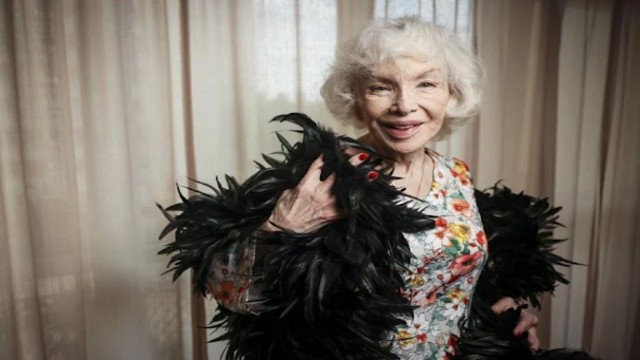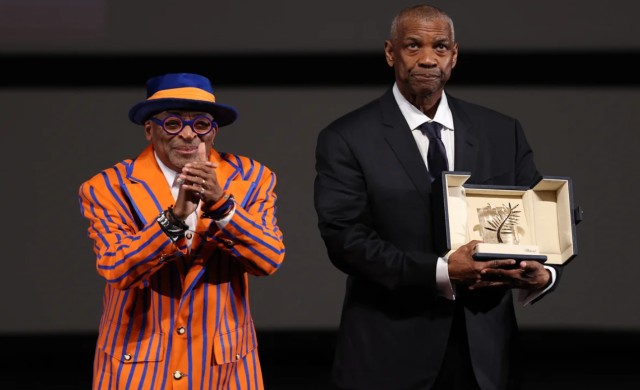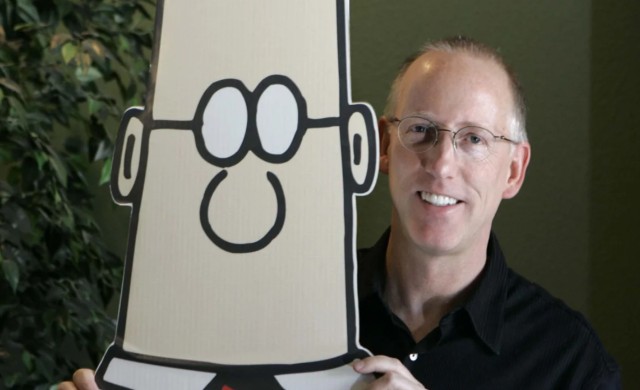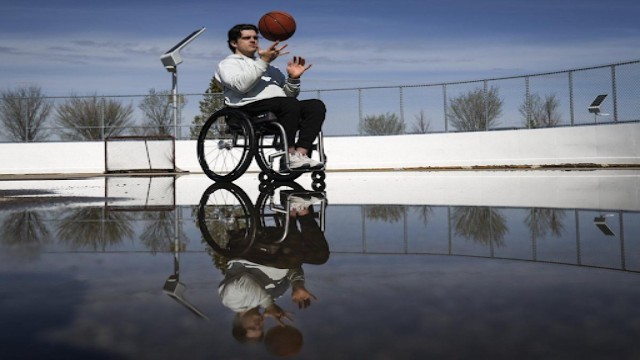
Marie-Pierre Pruvot, 89, known as Bambi, one of the first trans women in the world to become a public star, and a pioneer in global LGBTQ+ history, poses after an interview with the Associated Press, in Pantin, outside Paris, Tuesday, May 20, 2025. (AP Photo)
Decades before transgender rights became a global conversation, one bold performer was already rewriting history in stilettos. Her name was Bambi — a Parisian showgirl, scholar, and survivor who lived a life few dared dream of.
A Glimpse That Changed Everything
It was a scorching day in 1950s Algeria when a young Jean-Pierre Pruvot saw a woman strut confidently through the streets of Algiers. But this wasn’t just anyone — it was Coccinelle, a glamorous performer from the Carrousel de Paris, dressed immaculately and unapologetically feminine. Traffic halted. Eyes widened. Lives changed.
For Pruvot, the moment was electric. “I said to myself, ‘I’m going to do the same,’” she later recalled. That moment birthed Bambi — a name that would shimmer in Paris’s spotlight and echo through queer history.
A Cabaret of Resistance
After World War II, queer life in Europe was in ruins. The Nazis had destroyed Berlin’s thriving LGBTQ+ scene, sending thousands to camps. In this shadow, the Carrousel emerged — defiant, dazzling, and revolutionary.
Joining Coccinelle, April Ashley, and Capucine, Bambi became part of a shimmering resistance. They didn’t just perform. They protested — with sequins, stilettos, and smiles.
Celebrities like Elvis Presley, Maria Callas, and Marlene Dietrich flocked to their shows. The irony? Being a “travesti” was criminal, but their stage was a magnet for the elite.
Bambi - Star Among Legends
Bambi wasn’t just another performer. She was the performance — elegant, expressive, and unforgettable. She danced not to blend in, but to exist, fully and visibly.
Offstage, her world sparkled with moments alongside icons. Marlene Dietrich, ever dramatic, once stormed into a salon just to make her hair appointment. Piaf joked about Aznavour’s long performances. These weren’t just celebrity anecdotes. They were proof: Bambi belonged in their world.
Danger Behind the Glitter
Living as a woman wasn’t just daring — it was illegal. Police could arrest anyone wearing women’s clothes. But Bambi learned to navigate the grey areas: flat shoes, pants, caution.
Even then, risks were brutal. Friends were jailed, abused, and some died after unsafe surgeries. Casablanca had the only doctor for gender reassignment. Bambi waited, watched others survive it, and finally made the journey herself.
From Cabaret to Classroom
By the 1970s, Bambi vanished from the stage. Fame no longer fed her soul. She sought peace, legally changed her gender in Algeria, and became a respected teacher. At the Sorbonne, no one suspected her past.
She shelved her boas, buried her memories in books, and lived as Marie-Pierre Pruvot — quiet, brilliant, and free.
Legacy Without Apology
Now nearing 90, Bambi watches the world change again. She’s cautious of rapid shifts in gender discourse and skeptical of cultural “wokeism.” But she remains firm in her identity: “I never wore a mask. Except when I was a boy.”
When asked about JK Rowling’s controversial views on transgender issues, Bambi was dismissive yet measured. She said Rowling’s opinions “count no more than a baker’s or a cleaning lady’s,” showing her belief that no one voice should dominate the conversation.
She danced before anyone had words for people like her. And because she danced, the world found its voice.
Bambi didn’t just break barriers — she walked past them in heels, smiling.















